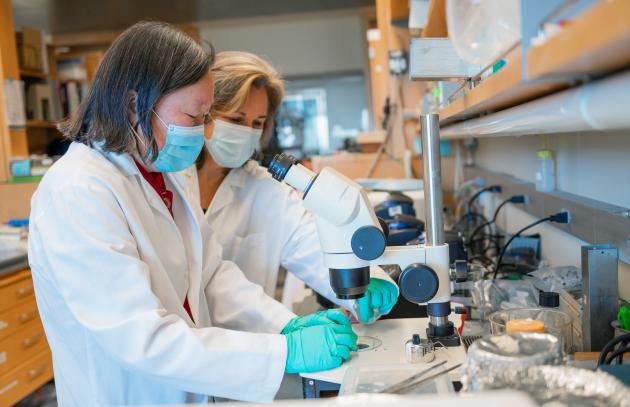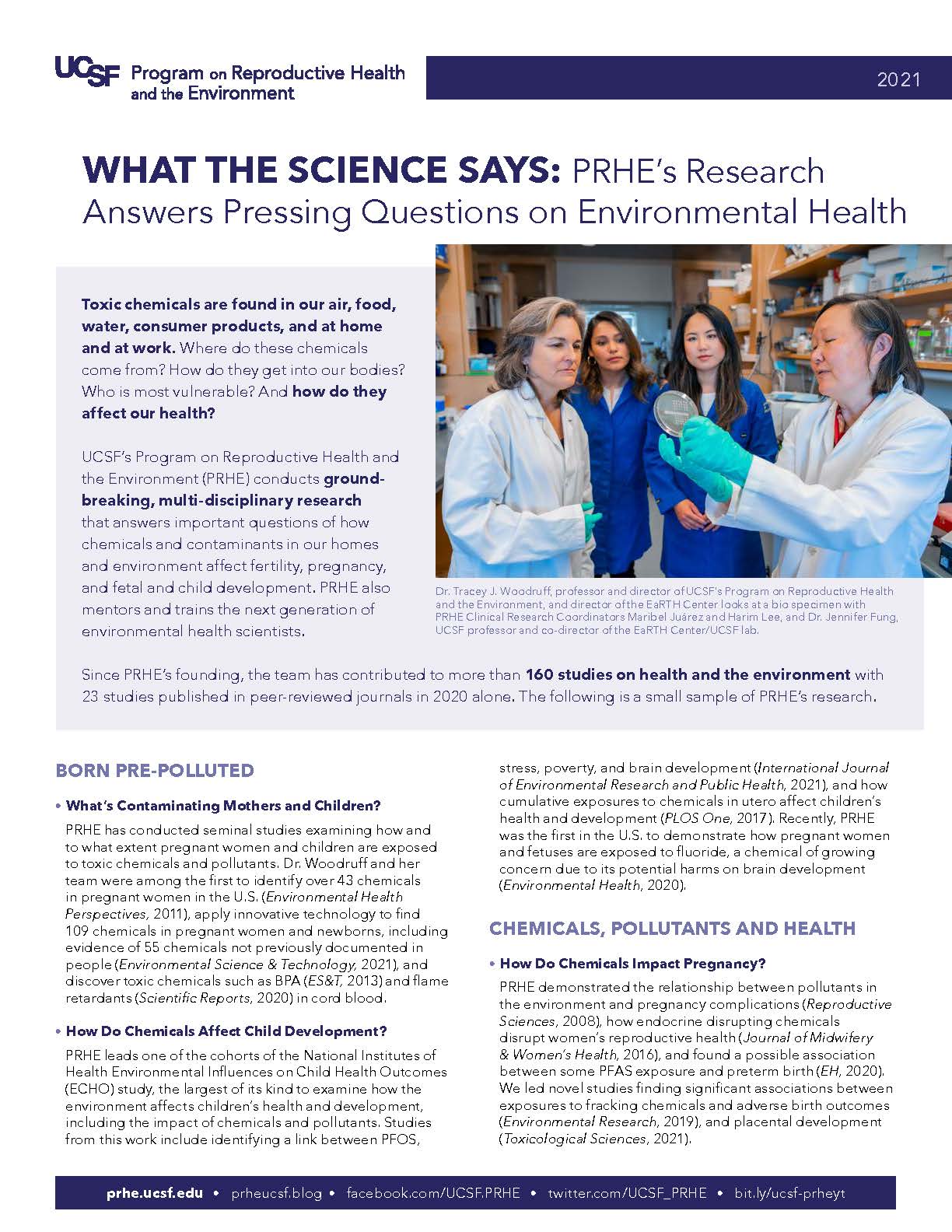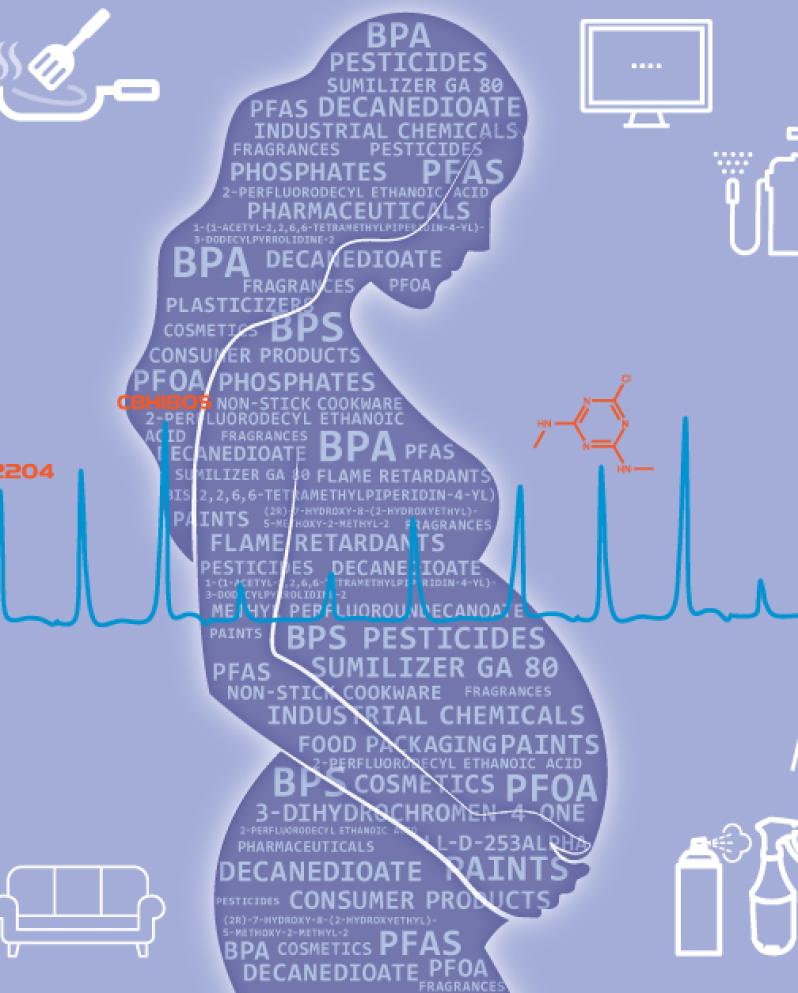Investigating environmental links to disease
Our ground-breaking, multidisciplinary research answers important questions on how chemicals and contaminants in our homes and environment affect fertility, pregnancy, fetal and child development, and health equity. We prioritize filling gaps in knowledge that support clinical decision-making and public policy.
We have written or contributed to more than 180 studies on health and the environment with 23 studies published in peer-reviewed journals in 2020 alone.
UCSF Study Finds Evidence of 55 Chemicals Never Before Reported in People
Scientists at UC San Francisco have detected 109 chemicals in a study of pregnant women, including 55 chemicals never before reported in people and 42 “mystery chemicals,” whose sources and uses are unknown. The chemicals most likely come from consumer products or other industrial sources.
The study was published March 17 in Environmental Science & Technology.
Major Research Areas

Chemicals
We study how harmful chemicals put into our air, food, water, homes, products, and workplaces affect pregnancy, child development, and health.

Plastics
Plastics are a petro-chemical product packed with endocrine-disrupting chemicals that can harm pregnancy, birth outcomes, neurodevelopment, and immune systems.

Climate and Wildfires
We examine how climate is impacting women's and children's health and how to protect pregnant people from wildfire smoke.
Key Research Projects

ECHO
The Environmental Influences on Child Health Outcomes (ECHO) is the largest NIH-funded study to date to explore how chemicals and pollutants in our environment impact pregnancy and child development.

DREAM
The Discovering cancer Risks from Environmental contaminants And Maternal/child health (DREAM) project collected data to explore how chemicals put in our air, food, and water increase cancer risk.

ENACT Center
In partnership with Stanford University, the Endometriosis Center for Action, Community Engagement and Training (ENACT) will work to improve endometriosis diagnosis and treatment by exploring the origins and environmental links to this disease.

PRHE conducts groundbreaking, multi-disciplinary research that answers important questions of how chemicals and contaminants in our homes and environment affect fertility, pregnancy, and fetal and child development. PRHE also mentors and trains the next generation of environmental health scientists.
Published Studies
Commentary on a study entitled “Unhealthy air quality secondary to wildfires is associated with lower blastocyst yield” that examined the impact of the 2020 Oregon wildfires on gamete development and fertility outcomes.
Fertility, wildfire, SF Bay area, IVF, commentary
Wildfires in the Western United States are a growing and significant source of air pollution that is eroding decades of progress in air pollution reduction. The effects on preterm birth during critical periods of pregnancy are unknown.
Pregnancy, wildfire, California, preterm birth
Pollution, including air pollution, water pollution, pollution from lead and other chemicals, and toxic occupational exposures, is the leading cause of premature death globally, with more than 90% of pollution-related deaths occurring in low- and middle-income countries. Chemical pollution is estimated to be responsible for at least 1.8 million deaths each year.
Wildfires have become more frequent and intense due to climate change and outdoor wildfire fine particulate matter (PM2.5) concentrations differ from relatively smoothly varying total PM2.5. Thus, we introduced a conceptual model for computing long-term wildfire PM2.5 and assessed disproportionate exposures among marginalized communities.
Wildfire, California
Widespread exposure to organophosphate ester (OPE) flame retardants with potential reproductive toxicity raises concern regarding the impacts of gestational exposure on birth outcomes. Previous studies of prenatal OPE exposure and birth outcomes had limited sample sizes, with inconclusive results.
Some hormonally active cancers have low survival rates, but a large proportion of their incidence remains unexplained. Endocrine disrupting chemicals may affect hormone pathways in the pathology of these cancers.
We identified both exogenous and endogenous chemicals seldom quantified in pregnant study participants that were also related to pregnancy complications and demonstrated the utility of NTA to identify chemical exposures of concern.

